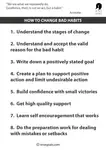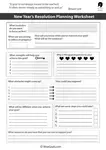The Transformative Power of Self-Compassion
How to Be Kinder to Yourself—Especially When It’s Hard
Self-compassion in difficult moments is a vital life skill.
Yet most of us find it easier to comfort others than ourselves. We default to harsh self-criticism or numbing avoidance—neither of which helps long-term.
What if you could meet pain with warmth instead? Research shows self-compassion reduces anxiety, builds resilience, and fosters lasting well-being.
This isn’t about self-pity or indulgence. It’s about recognizing struggle as part of being human—and responding with the same kindness you’d offer a loved one.
Here’s how to make self-compassion a natural response, even when it feels unfamiliar at first.
Understanding Self-Compassion: Beyond the Buzzword
Self-compassion isn’t about bubble baths or positive affirmations. It’s a practical skill—the ability to meet personal suffering with clear-eyed kindness.
Unlike self-esteem (which judges our worth), self-compassion asks: "How would I treat a friend in this situation?" That subtle shift changes everything.
Decades of psychological study confirm it’s learnable—and worth learning. Let’s define it clearly before exploring why it matters.
1. Defining Self-Compassion (Without the Jargon)
Psychological research breaks self-compassion into three core elements:
Self-kindness vs. self-judgment: Speaking to yourself like you would to someone you love. No toxic positivity—just less unnecessary harshness.
Common humanity vs. isolation: Recognizing that everyone fails, struggles, and feels inadequate sometimes. You’re not uniquely flawed.
Mindfulness vs. over-identification: Noticing painful feelings without drowning in them. It’s about asking: "This is a difficult moment. What do I need right now?"
It’s not self-pity or laziness. True self-compassion fuels growth by creating psychological safety to face hard truths.
2. Why This Matters in Real Life
Imagine facing a work failure. The self-critical mind spirals: "I’m such an idiot." The avoidant mind numbs with distractions.
The self-compassionate response? "This hurts, but it doesn’t define me. What can I learn?"
This approach leads to measurable benefits:
- Reduced anxiety and depressive thoughts
- Quicker recovery from setbacks
- More authentic relationships
It’s not about eliminating pain. It’s about changing your relationship to pain—which changes everything.
3. What the Science Shows
Self-compassion is often mistaken for self-indulgence, but research reveals a surprising truth: most people struggle to treat themselves with the same kindness they offer others. Those who practice self-compassion consistently show greater emotional resilience, motivation, and overall well-being compared to those dominated by self-criticism.
The Neuroscience of Self-Kindness
Modern brain research highlights key differences in how we process self-criticism versus self-compassion:
- Self-criticism triggers the brain's threat response, activating stress hormones and putting us into a defensive state similar to facing physical danger.
- Self-kindness stimulates the brain's care system, releasing chemicals associated with safety and connection—the same biological response as receiving comfort from someone we trust.
- Brain imaging shows that people who regularly practice self-compassion develop neural patterns associated with quicker emotional recovery and less reactivity to setbacks.
Measurable Benefits for Mind and Body
Rigorous clinical testing demonstrates that structured self-compassion practice leads to:
- Significant reductions in stress-related biological markers
- Improved regulation of inflammation in the body
- Faster emotional recovery after failure or disappointment
- Increased persistence when facing challenges
A Learnable Skill for Life
Unlike personality traits we're born with, self-compassion is a trainable ability. Simple daily practices can measurably strengthen emotional resilience over time, leading to:
- Healthier relationships
- More effective stress management
- Greater motivation to pursue goals despite obstacles
The evidence is clear: self-compassion is far more than feeling good—it's a powerful tool that reshapes how we experience challenges. By changing how we treat ourselves, we fundamentally change our capacity to engage with life.
Building Self-Compassion: A Step-by-Step Practice Guide
Knowing about self-compassion isn’t enough—we need to practice it. This measurable approach lets you track progress. You’ll assess your starting point, experiment with techniques, and compare results. Think of it as a personal science project where kindness is both the method and the outcome.
Step 1: Measure Your Baseline
The Self-Compassion Scale gives you a snapshot of where you are. Set aside 10 minutes to complete the 26 questions honestly—no judging your judging. Your score breaks down into three areas:
- Self-kindness: How gently you speak to yourself in hard times
- Common humanity: Whether you see struggles as isolating or universal
- Mindfulness: How balanced your emotional awareness is
Record your scores. This isn’t about "good" or "bad" results—it’s your starting line.
Step 2: Choose a Focus Area
Review your scale results. Where is the gap between how you want to respond to suffering and how you actually do? Pick one specific behavior to work on, like:
- Noticing when you’re self-critical (without judging the criticism)
- Pausing when stressed to ask "What would I tell a friend right now?"
- Labeling emotions ("This is disappointment") instead of over-identifying ("I am a disappointment")
Start small—even 5% improvement counts.
Step 3: Brainstorm Practice Options
List every possible way to nurture your focus area. Include:
- Micro-practices: Set phone reminders to check your self-talk
- Body-based: Place a hand on your heart when noticing pain
- Language shifts: Replace "but" with "and" ("I’m struggling and doing my best")
- Environmental: Post notes with compassionate phrases where you’ll see them
- Creative: Write a letter to yourself from a wise friend’s perspective
Quantity over quality here—you’ll refine next.
Step 4: Prepare for Obstacles
Pick one method from your list. Now imagine trying it for a week. What might derail you? Common barriers:
- "I’ll forget": Pair the practice with an existing habit (e.g., after brushing teeth)
- "It feels silly": Acknowledge the discomfort—it means you’re trying something new
- "I don’t have time": Start with 30-second versions (one mindful breath counts)
Anticipating hurdles makes them normal rather than failures.
Step 5: Experiment and Compare
After 8-12 weeks of practice, retake the Self-Compassion Scale. Look for:
- Score changes: Even slight shifts matter—the scale is sensitive
- Unexpected wins: Maybe your sleep improved or conflicts decreased
- New goals: Your initial focus area might reveal a deeper layer to address
This isn’t about perfection—it’s about building a kinder relationship with your imperfect self.
Deepening Your Understanding: Resources to Explore
Self-compassion is a skill that grows with practice and knowledge. Whether you prefer books, videos, or research, these resources will help you explore the science and application of self-compassion in daily life.
Affiliate products.
If you purchase a product through links on this page I receive a small commission at no cost to you. I was not paid for writing this review, and I did not receive it as a freebie. I'm suggesting it for you because I own it and love it, and I think you would too. For more info, please see this affiliate disclosure document.
Books to Guide Your Journey
- "Self-Compassion" by Kristin Neff – The foundational book on the topic, blending research with practical exercises. Neff’s work is essential for understanding the three core components: self-kindness, common humanity, and mindfulness.
- "The Mindful Self-Compassion Workbook" by Kristin Neff & Christopher Germer – A hands-on guide with structured exercises to build self-compassion step-by-step.
- "Radical Acceptance" by Tara Brach – Explores how mindfulness and self-compassion can heal emotional wounds, with relatable stories and meditations.
Videos for Insight & Practice
- Kristin Neff’s TED Talk: "The Space Between Self-Esteem and Self-Compassion" – A clear, engaging breakdown of why self-compassion is more sustainable than self-esteem.
- Tara Brach’s RAIN Meditation – A logical mindfulness practice for working with difficult emotions.
Key Research Findings
My own research, published in Child Protection and Practice, highlights how self-compassion buffers the effects of childhood adversity. The review found that individuals with higher self-compassion showed greater resilience against anxiety, depression, and PTSD, even after significant early-life stress. Read the full study here.
These resources offer both theory and practice—helping you move from understanding self-compassion to truly embodying it.
Ready to Make Self-Compassion Your Natural Response?
While this guide gives you the foundation, many people find that personalized support helps them:
- Develop a custom self-compassion plan for your specific challenges
- Turn knowledge into consistent habits that stick
- Create real-time strategies for difficult situations
- Move beyond theory to actual behavior change
As a trauma-aware positive psychology coach with published research in this field, I help clients co-create actionable approaches that work for their unique life circumstances.
Book Your Free Consultation
We'll identify your biggest self-compassion obstacles and design your first personalized tactic in just 30 minutes.
Who I'm Affiliated With
I'm proud to be part of professional networks that value evidence-based practice, inclusion, and social impact.










